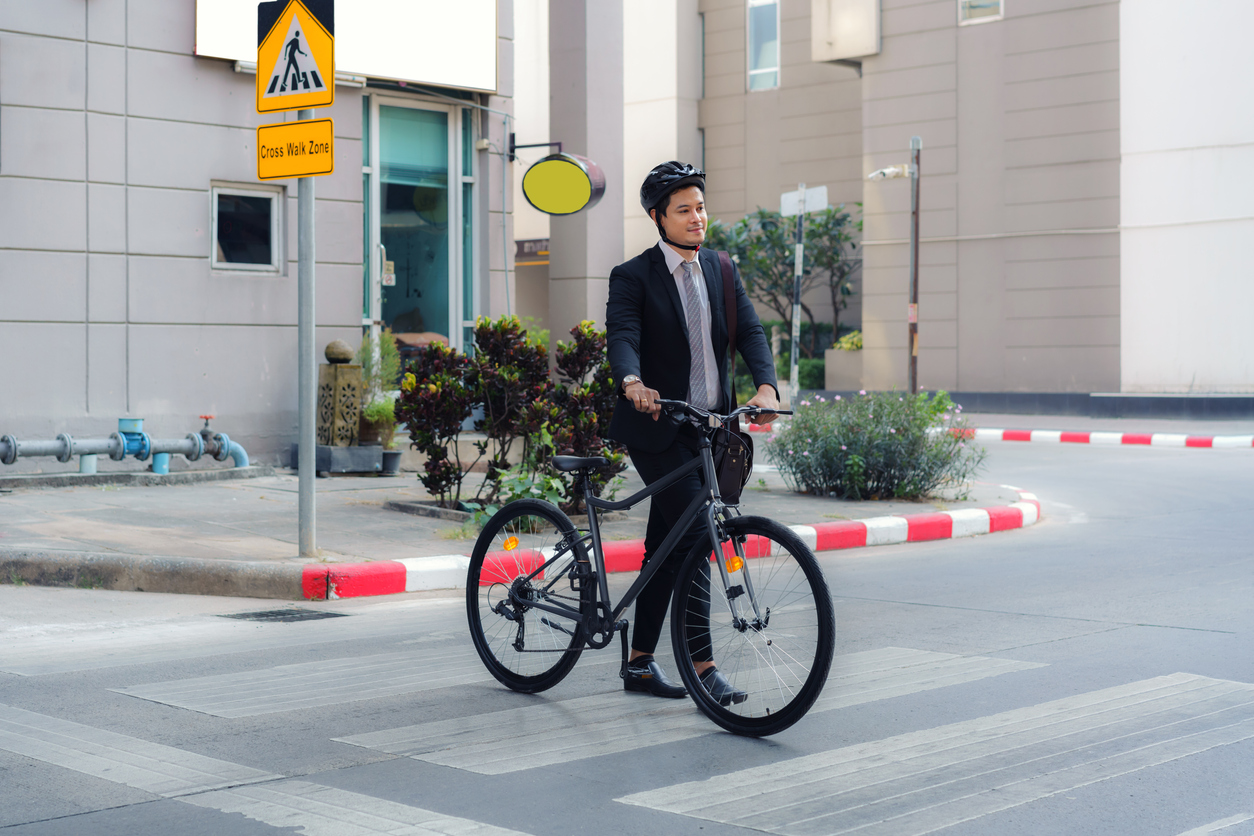The Bipartisan Infrastructure Bill (BIB) invests over $1 trillion in bridges, public transportation, water systems, and communications systems. The bill invests in projects that stimulate economic activity, connect communities, and improve safety.
Some of this money in this bill will improve bike safety. By investing in safer roads, dedicated bike trails, and better accident data, the bill will lay the groundwork for improved safety now and in the future.
Here is some information about what the BIB means for bike safety.
Status of the BIB
At the time of this post, the U.S. Senate has passed the BIB. The U.S. House of Representatives also passed its own infrastructure bill, known as the Bipartisan Infrastructure Framework (BIF).
If the BIB passes the House with no changes, it will go directly to the President to become law.
Road Safety Programs in the BIB
The BIB creates new programs, invests in several existing programs, and expands on a few old programs.
Expansion of Existing Programs
Many programs were expanded to include additional communities, provide increased funding, or limit the ability of states to transfer money out of the programs.
Transportation Alternatives Program (TAP)
The TAP provides over $1 billion per year in funding for states to plan and build infrastructure for pedestrians and bicyclists.
The BIB requires states to allow local communities to compete for the funding before transferring TAP money into other projects.
As a result, more of the money will go to pedestrian and bicycle projects rather than highway and road projects.
Not all of this money will go to biking safety projects. But bike safety will improve as communities spend this money on bike lanes, bike bridges and tunnels, bike trails, and other infrastructure limited to non-motorized vehicles.
Safe Routes to School
The Safe Routes to School program provides funding to communities to plan and develop infrastructure and educational programs to promote safe school commutes.
Communities can use this money to collect data about how students reach schools and build sidewalks and bike lanes to protect them. Schools can also use the funding to promote biking and walking to school with prizes and safety equipment for students.
The BIB expands the Safe Routes to School program to cover high schools. It also authorizes the federal government to spend funds from its two main road programs — the Surface Transportation Program and the Highway Safety Improvement Program — for the Safe Routes to School Program.
Complete Streets
Complete Streets standards build pedestrians and bicyclists into road designs. The BIB requires all states to develop Complete Streets design standards so that new roads can accommodate pedestrians and bikes wherever possible.
The BIB also contains $6 billion so that states can retrofit existing streets to meet the Complete Streets safety standards.
New Programs
The BIB creates some new programs specifically designed to improve bike safety.
Vulnerable Road User Safety Assessment
Each state must assess dangerous routes and develop strategies to improve safety for vulnerable road users such as bikers and pedestrians. Even more importantly, states must quantify the dangers to pedestrians and cyclists and spend a proportional amount of funding on safety.
For example, a state in which 15% of road deaths represent vulnerable users must spend 15% of its highway safety budget on vulnerable user safety. These safety projects could include bike lanes, crosswalks, traffic control signals, pedestrian and bike bridges, and other infrastructure.
Data Gathering Programs
The BIB requires the Department of Transportation to provide updated traffic statistics on deaths and injuries. The government will provide this data to the states and public interest groups so they can identify areas in which safety needs improvement.
The Future of Safety Programs
The BIB is not the endpoint for bike safety. Many advocacy groups are pushing additional legislation to improve bike safety and provide funding for bike safety projects. Some of these projects, like the Transportation Connectivity Grant Program, the Recreational Trails Program, and the Reconnecting Communities Program may be taken up in later legislation.


